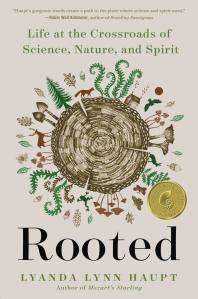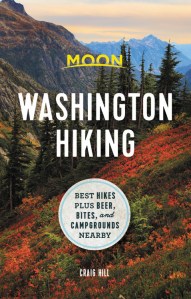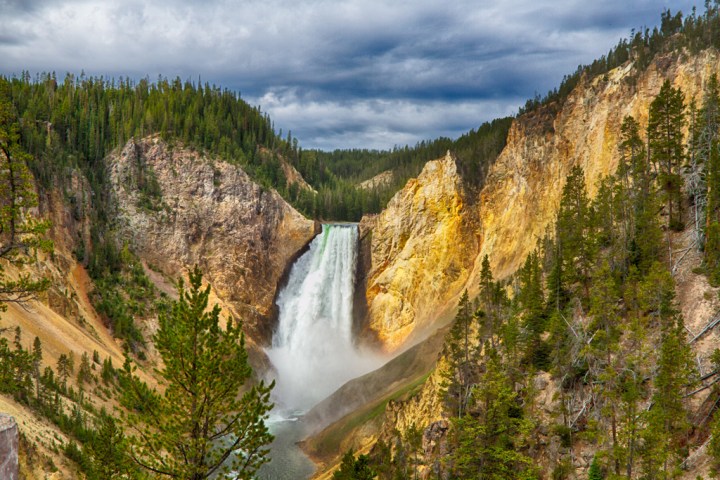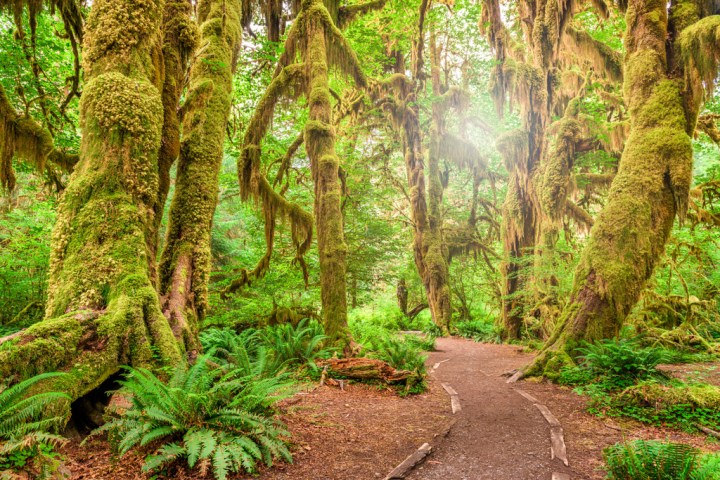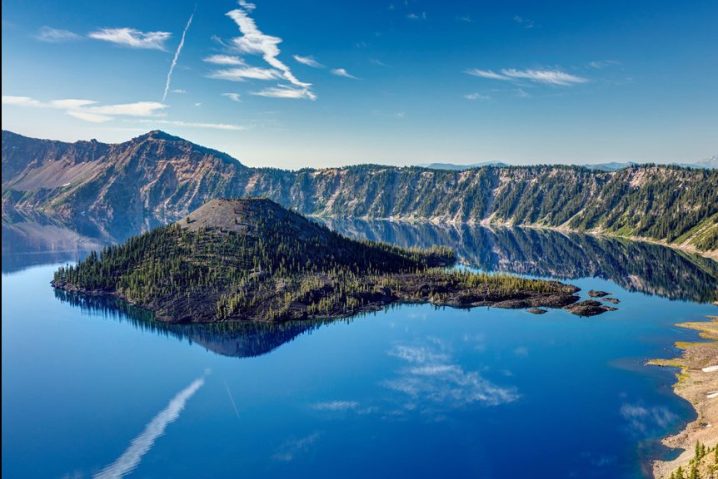Q&A: Lyanda Lynn Haupt and Craig Hill
Moon Washington Hiking author Craig Hill sat down with award-winning writer Lyanda Lynn Haupt—author of Rooted: Life at the Crossroads of Science, Nature, and Spirit—to talk all things Pacific Northwest, hiking, and connecting with nature.
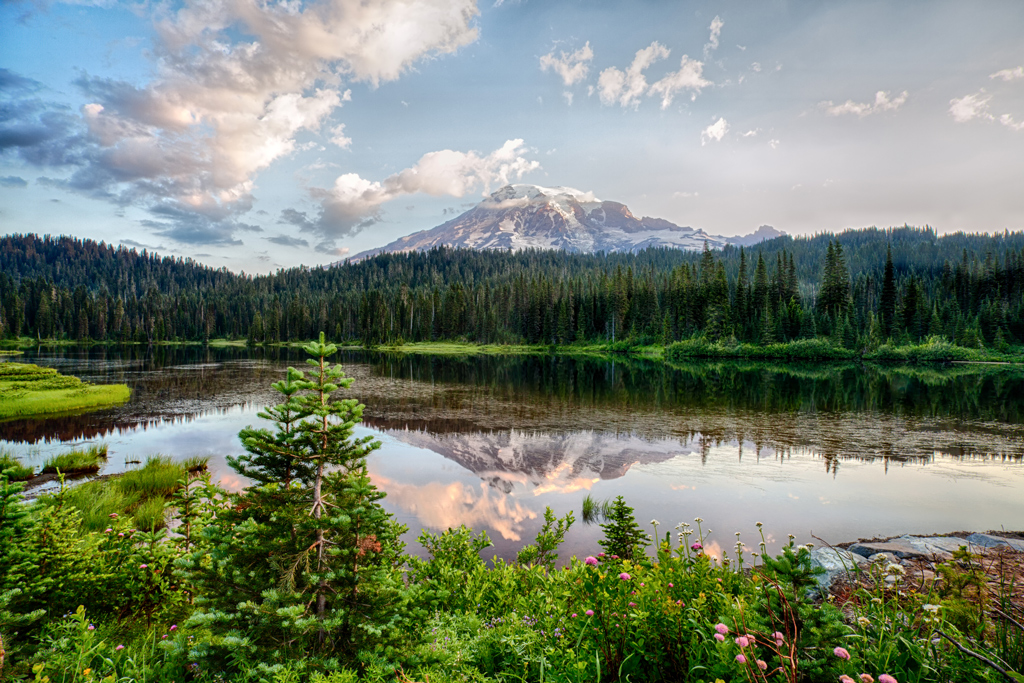
Lyanda Lynn Haupt: We both live in the Pacific Northwest. Do you think living in this moody, green place influences the way you write and think about nature (even if you are writing about other places)?
Craig Hill: I don’t remember the story my mom was reading to me when I was a kid, but I remember interrupting to ask, “what’s an eerie forest?” I was surprised to learn that an “eerie forest” is just a regular forest viewed from a different perspective. I’ve absorbed enough popular culture over the years that some of that imagery creeps into my writing, but my perspective is definitely influenced by a lifetime exploring the woods of the Pacific Northwest. Of course, I see how a foggy morning in the dark green Hoh Rainforest would be described as haunting, but it’s also a lifegiving beauty vital to the rainforest’s existence. So, hiking on rainy days I find myself appreciative. Appreciative for the beauty we wouldn’t have without the rain. And for Gore-Tex.
CH: I really enjoyed your chapter on solitude (especially the footnote regarding your exchange with your daughter). In recent years I’ve been impressed by my wife, Kristen, carrying the extra weight of well-intentioned comments from friends and family as she strives to spend more time alone in nature. What advice do you give people whose natural fears are being stoked by the good-hearted?
LLH: Haha, yes, when my mom expresses her worries to me, I just thank her, reassure her that I am well-prepared, and promise to call when I get home. But as you say, having a college-age daughter has turned the tables on me! Claire is starting to take some solo day-hikes, and at first I couldn’t help saying, “Um…don’t you think it would be better to take a friend?”—even while writing a chapter about the joys of wild solitude! After her first solo hiking micro-adventure, she said, “Now I see why were worried about me hiking by myself.” Of course, my mom-mind flew to “Why, did someone scare you?” Claire just laughed and said, “No, because you knew I would realize how wonderful it is and that I’d never want to do anything else!” So, I was totally caught in my own preaching.
Solitude in nature is an essential way of deepening connection with the earth and intimacy with our own minds, yet fear of time alone in nature is common, and based in a very modern social conditioning. In the book, I share a lot of the statistics about women’s wilderness safety that counteract common fears on a rational level—these are good reminders. We can do our part by arming ourselves with common sense—heading out into the woods with preparation, within our skill level, and building up to longer periods of solitude slowly. I think it also helps to be honest, meet the fear head on, and just say to ourselves and others, “You know, yes, I often get scared out there alone, but it’s always worth it—I learn so much about myself, and I wouldn’t trade it for anything.”
Deepen your connection to the natural world with this inspiring meditation, "a path to the place where science and spirit meet" (Robin Wall Kimmerer).
LLH: What have you learned about the natural world while hiking that you couldn’t have learned from a book or a scientific paper?
CH: I’ve learned that nature is a great teacher. It educates us without saying a word. I feel like nature teaches me about myself, my limits, and keeping a healthy perspective. And I think it teaches us to respect the natural world. I believe it’s impossible to regularly spend time in the outdoors without intrinsically learning to care for the natural world. I recently read an article in the Trakia Journal of Sciences about a study of students at a university in Bulgaria. The study, published in 2020, observed students who hiked daily in the mountains and those who participated in other sports and revealed that the hikers started taking more actions to protect nature while the other students did not. None of the students received any formal education about taking care of nature or minimizing their impact in the outdoors. I think Mother Nature would make good stewards out of us all if we gave it the chance.
CH: Living in Seattle, the Northwest’s largest city, do you have a daily routine or practices for staying connected with nature?
LLH: I believe that we can make meaningful contact with the natural world wherever we are, just by shifting our awareness. I honestly start with weather. Every morning, I like to step outside (instead of checking the weather on my phone!) and remind myself that whatever is going on out there—sun, rain, hail—it is being experienced by all living beings in my nearby ecosystem, from deer to fern to butterfly to salmon. One of the things my family has done for over a decade is put up a tent in the backyard in early May. We sleep out there until November most years, and always learn so much—awareness of the night creatures (opossums, racoons, maybe coyotes or owls…), how early the birds start to sing, and who they are, and when their migrations begin and end. There is the shining presence of the stars and moon, and the air is just so much less stuffy than inside. I always begin and end the day with a barefoot walk around the garden, which helps me get a sense of the specificity of the changing seasons, and think about how other beings are surviving. I know not everyone has a backyard, but most people reading this can probably contrive ways to sleep outside sometimes, and just going outside at all—to work, walk, write, watch—is a step toward connection.
Craggy coastal cliffs, towering active volcanoes, and cascading waterfalls: wherever you turn in Washington, adventure awaits. Pack a lunch, lace up your boots, and hit the trails with Moon Washington Hiking.
LLH: I want to ask the same question back at you: How do you recommend people stay connected to the wild earth even when they are living in the city or can’t get out to the trails?
CH: As you know, opportunities to connect with nature are all around us. I’m guilty of forgetting this from time to time because I, like so many of us, have the habit of getting caught up in my projects, work, and Netflix. But I love unplugging and stepping outside to take a short walk or just lounge in the backyard (which is what I’m doing right now). I find it supremely peaceful to lay under a tree and gaze up through the branches at a blue sky. I’m routinely fascinated by the wildlife that passes through my yard. Over the past year we’ve been visited by squirrels, raccoons, opossums, coyote, deer, owls and an ever-growing family of bunnies. I’d always rather be on a trail somewhere in the Cascades, but you can connect with nature anywhere if you slow down and pay attention.
CH: What would you recommend if I ask for the most interesting hike in or near Seattle?
LLH: Hmm, tough question. So many possibilities, plus you cover most of my favorites in your book (and my favorites that aren’t in your book are top secret)! I’m going to dodge the question, and say that it depends entirely on the day, the season, and the mood. I’d like to combine the philosophies of our books here. In Rooted, I suggest “wandering”—the openness to approaching a day’s walk without a set route, seeing where our intuition and inner voice lead us. If someone comes to Seattle, I hope they’ll ask a Pacific Northwest friend for a recommendation, or choose a line on a beautiful old topographical map and see where it leads. And afterwards? Yes, wind down and process the adventure with a nice local sip and nibble.
LLH: There is so much practical knowledge in your book, and I love that there is physical outdoor activity combined with a “kick back and relax” vibe. I think there is a philosophy that shines through. What is unique about the takeaway you offer readers in this book compared to other guidebooks?
CH: With the Northwest hiking guidebooks, Matt Wastradowski and I wanted to encapsulate the full hiking experience. Most hiking guidebooks focus on the trail, but when you think about your hiking adventures there’s so much more to them. Of course, the time on the trail is the highlight. The encounters with nature, the destinations, the stunning scenery and sense of accomplishment is the reason we hike. But there is also the time before and after your hike that magnifies these adventures. I really enjoy that time where I absorb and process the outing before heading home. Often times that happens sitting around a campfire with friends or visiting a mom-and-pop restaurant in a gateway community. We really wanted to bring this part of the hiking experience into the fold. We do this by recommending trip itineraries, providing a guide to campgrounds near the hikes, and by recommending loads of interesting restaurants and breweries.
By clicking ‘Sign Up,’ I acknowledge that I have read and agree to Hachette Book Group’s Privacy Policy and Terms of Use
